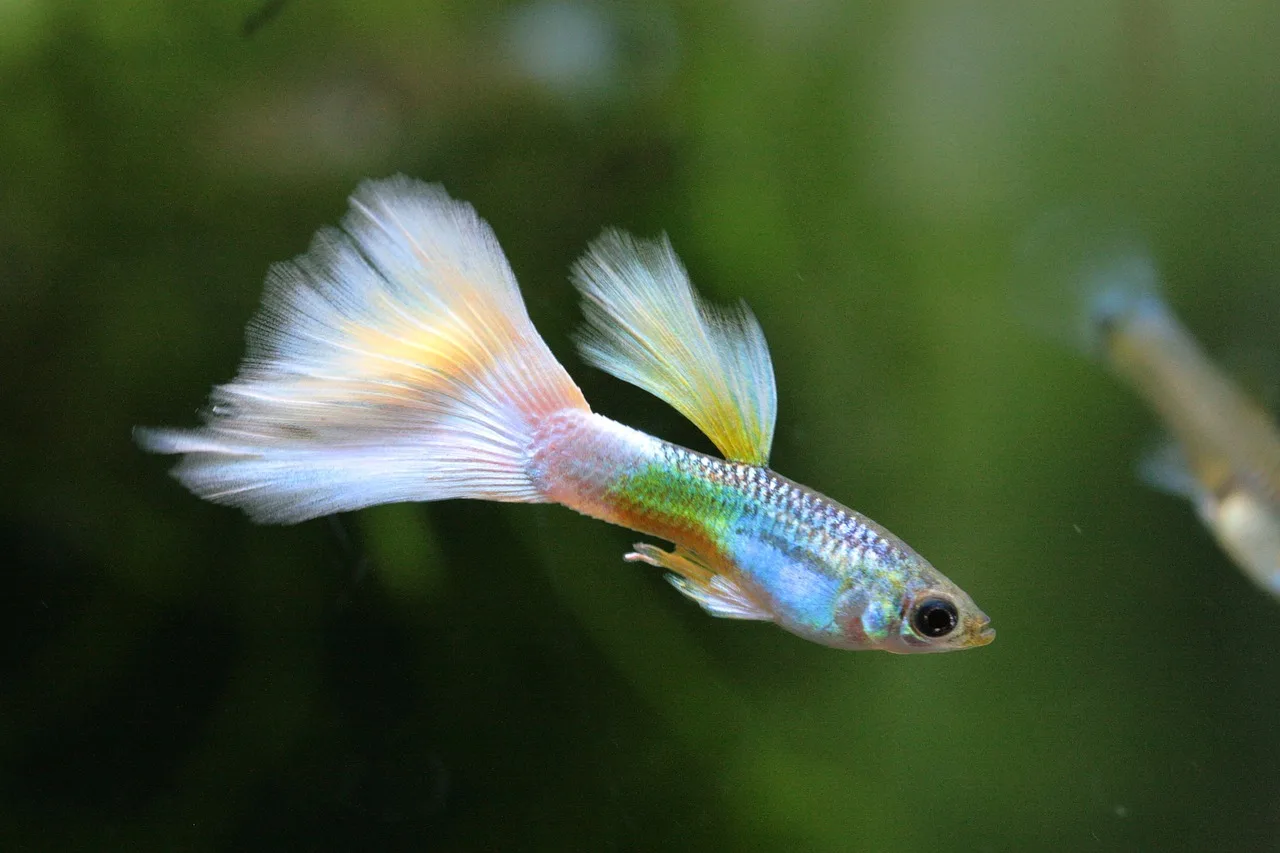
Albino Guppy: A Beginner’s Guide to Care, Breeding, and More
Introduction
Albino Guppies, with their striking appearance and easy maintenance, are an excellent choice for beginners looking to start their journey into the world of aquarium fishkeeping. In this comprehensive guide, we will explore the origin, tank setup, breeding, feeding, common diseases, and more for these fascinating fish. Whether you’re a newcomer to the hobby or a seasoned aquarist, there’s always something new to learn about these captivating albino variants of the popular Guppy fish.
Origin of Albino Guppies
Albino Guppies, scientifically known as Poecilia reticulata, is a unique variant of the common Guppy, originally hailing from the freshwater streams, rivers, and ponds of South America, particularly in countries like Venezuela, Guyana, and Trinidad. Their distinctiveness lies in their lack of pigmentation, giving them a captivating, translucent appearance. This trait is the result of a genetic mutation, which has been selectively bred to produce the albino strains we see today.
Albino Guppies exhibit a variety of colorations, including striking hues of red, orange, and even yellow, enhancing their visual appeal. Their captivating look makes them a favored choice among aquarists, and their ease of care adds to their popularity.
Tank Setup for Albino Guppies
Creating the ideal environment for Albino Guppies is crucial for their well-being and successful breeding. Here’s what you need to consider when setting up their tank:
Tank Size and Water Parameters
- Tank Size: A 10 to 20-gallon tank is suitable for a small group of Albino Guppies. Ensure a minimum of 2 gallons of water per fish to allow for proper swimming space.
- Water Temperature: Maintain a water temperature between 72-82°F (22-28°C), providing a stable and comfortable climate for your fish.
- Water Quality: Albino Guppies are sensitive to water quality, so a good filtration system and regular water changes are essential. Keep the pH level between 6.8 and 7.8, and the water hardness at 10-20 dGH.
Substrate and Decorations
- Substrate: Use fine gravel or sand as the substrate. Guppies often nibble at the substrate, and these options are safe for them.
- Plants: Live or silk plants provide shelter and hiding spots for your Albino Guppies. Java moss and Anubias are excellent choices.
- Decorations: Add caves or PVC pipes to serve as hiding places for fry and adult fish.
Lighting
- Albino Guppies are not particularly light-sensitive, but a moderate lighting setup with a photoperiod of 8-12 hours per day is ideal. This encourages healthy plant growth and normal behavior in your fish.
Breeding Albino Guppies
Breeding Albino Guppies can be a rewarding experience, and these fish are prolific breeders. Here are some essential tips for successful breeding:
Selecting Breeding Stock
- Choose healthy, sexually mature Albino Guppies for breeding. You can identify males by their modified anal fin, the gonopodium, and females by their rounder bodies.
- Maintain a ratio of one male to two or three females to prevent overzealous males from stressing out the females.
Breeding Tank
- Set up a separate breeding tank, a smaller one, for breeding Albino Guppies to protect the fry from being eaten by adult fish.
- Provide an ample amount of plants or breeding grass for the fry to hide in.
Breeding Process
- Place the selected male and females in the breeding tank. Guppies are livebearers, so the females will give birth to live fry.
- Once the fry are born, remove the adults from the breeding tank to prevent them from eating their offspring.
Fry Care
- Fry should be fed specialized fry food or crushed flakes to ensure their proper growth.
- Regular water changes and close monitoring of water quality are essential for the fry’s health.
Feeding Albino Guppies
Maintaining a well-balanced diet is vital for the health and vibrancy of your Albino Guppies. Here are some feeding guidelines:
- Dry Food: High-quality flake or pellet food formulated for tropical fish is an excellent choice for the staple diet of your Albino Guppies.
- Live and Frozen Foods: Supplement their diet with live or frozen foods like brine shrimp, daphnia, or bloodworms. This provides necessary variety and enhances their coloration.
- Frequency: Feed your Albino Guppies small portions 2-3 times a day. Ensure they consume the food within a few minutes to avoid overfeeding.
- Avoid Overfeeding: Overfeeding can lead to obesity and water quality issues. It’s best to offer small amounts of food at regular intervals.
Common Diseases in Albino Guppies
Albino Guppies, like other fish, are susceptible to certain common diseases. Being aware of these issues and taking preventive measures is essential:
Ich (White Spot Disease)
Ich is a common protozoan parasite that causes small white cysts on the skin and gills of fish. Quarantine new fish and maintain good water quality to prevent outbreaks. Increasing the temperature slightly and treating with a suitable medication can help eradicate the parasite.
Fin Rot
Fin rot is often caused by poor water quality. Keep the tank clean, maintain good filtration, and treat any affected fish promptly with an appropriate antibiotic.
Dropsy
Dropsy is a symptom rather than a disease, characterized by the swelling of the fish’s abdomen. It can be caused by various factors, including poor water quality and bacterial infections. Isolate affected fish and provide treatment accordingly.
In conclusion, Albino Guppies are an exciting addition to any aquarium due to their unique appearance and ease of care. By understanding their origin, providing the right tank setup, breeding them with care, ensuring a balanced diet, and being vigilant about common diseases, you can enjoy the beauty of these captivating fish while providing them with a healthy and thriving environment. Stay tuned for more expert tips on caring for aquarium fish!